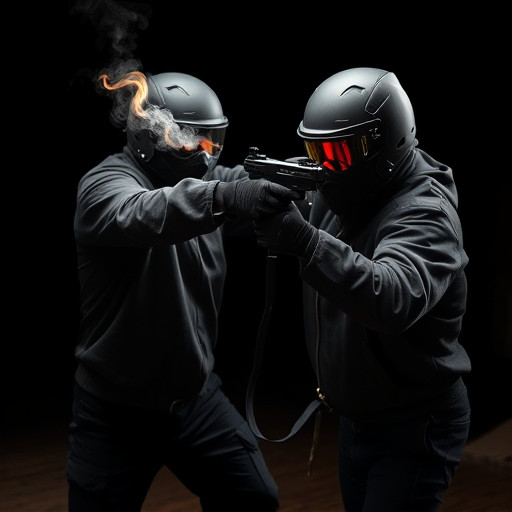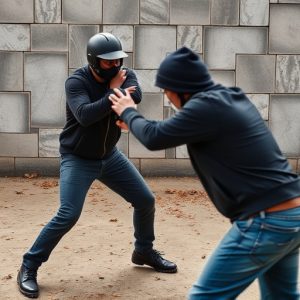Unveiling Stun Gun Effectiveness: Analyzing Electrical Current Spread
When purchasing a stun gun, key considerations include understanding electrical current spread patte…….
When purchasing a stun gun, key considerations include understanding electrical current spread patterns (DC with PWM offering advantages) for optimal shock delivery and control. Look for specific features like current amplitude, pulse duration, and frequency that impact current dispersal across contact points for maximum effectiveness. Evaluate coverage area, shock intensity, safety features, deployment ease, durability, ergonomic design, local regulations, and balance performance against safety and legal compliance to make an informed purchase decision.
Electrical current spread pattern analysis is a crucial aspect of understanding the performance and effectiveness of stun guns. By examining how electric current flows through a target, users can gain insights into the device’s capabilities and make informed decisions when purchasing. This article delves into the key factors to consider, practical applications, and safety precautions related to stun guns, highlighting what to look for when buying these devices.
- Understanding Electrical Current Spread Patterns
- Key Factors to Consider When Analyzing Stun Gun Performance
- Practical Applications and Safety Precautions for Stun Guns
Understanding Electrical Current Spread Patterns

Electrical current spread patterns are crucial in understanding how a stun gun delivers its shock and what factors influence its effectiveness. When purchasing a stun gun, it’s essential to consider the type of current used and its propagation. Direct current (DC) is commonly employed in stun devices, with variations like pulse width modulation (PWM) offering advantages such as reduced power consumption and improved accuracy in targeting specific muscle groups.
Looking for features that enhance current spread can significantly improve the device’s performance. Parameters to consider include current amplitude, pulse duration, and frequency. A well-designed stun gun should ensure the electrical current evenly disperses across the contact points, maximizing the shock’s impact while minimizing potential off-target effects. Understanding these patterns allows users to make informed decisions when buying stun guns, ensuring they get a device that delivers the desired level of protection and control.
Key Factors to Consider When Analyzing Stun Gun Performance

When evaluating stun gun performance, several key factors come into play. Understanding how electrical current spreads and affects the human body is crucial. Look for models that offer detailed information on their jolt patterns—the area of coverage and the intensity of the shock. This data will help you gauge the weapon’s effectiveness in neutralizing a threat.
Additionally, consider the stun gun’s safety features and design. Key aspects include the ease of deployment, durability, and ergonomic grip for comfortable use. Moreover, check for regulations and compliance with local laws regarding stun guns to ensure legal possession and operation. Remember that what to look for when buying stun guns involves balancing performance, safety, and regulatory adherence for optimal self-defense.
Practical Applications and Safety Precautions for Stun Guns

Stun guns, also known as electronic control devices (ECDs), have gained popularity for personal protection due to their non-lethal capabilities. When considering what to look for when buying stun guns, understanding how electrical current spread patterns work is essential. These devices use high-voltage, low-current electrical pulses to temporarily disable an assailant by disrupting muscle control in the body.
In practical applications, stun guns are valuable tools for self-defense, especially in situations where a person may be at risk of physical harm or assault. They offer a safe alternative to firearms and can be easily concealed. However, safety precautions should always be prioritized when using stun guns. Users must be aware of the device’s range, activation mechanisms, and any potential side effects. It is crucial to follow manufacturer guidelines, conduct proper training, and ensure the device is maintained in good working condition. Proper handling and a clear understanding of local laws regarding stun gun usage are vital for responsible ownership.
Electrical current spread pattern analysis is a crucial aspect of understanding the performance and safety of stun guns. By considering key factors such as current intensity, duration, and dispersion, users can make informed decisions when purchasing these devices. When shopping for stun guns, it’s essential to look for products that offer precise current delivery, ensuring both effectiveness in self-defense scenarios and minimizing potential risks. Understanding the spread pattern allows users to navigate the complexities of personal safety, empowering them with knowledge about what to look for in a stun gun to protect themselves and others.


